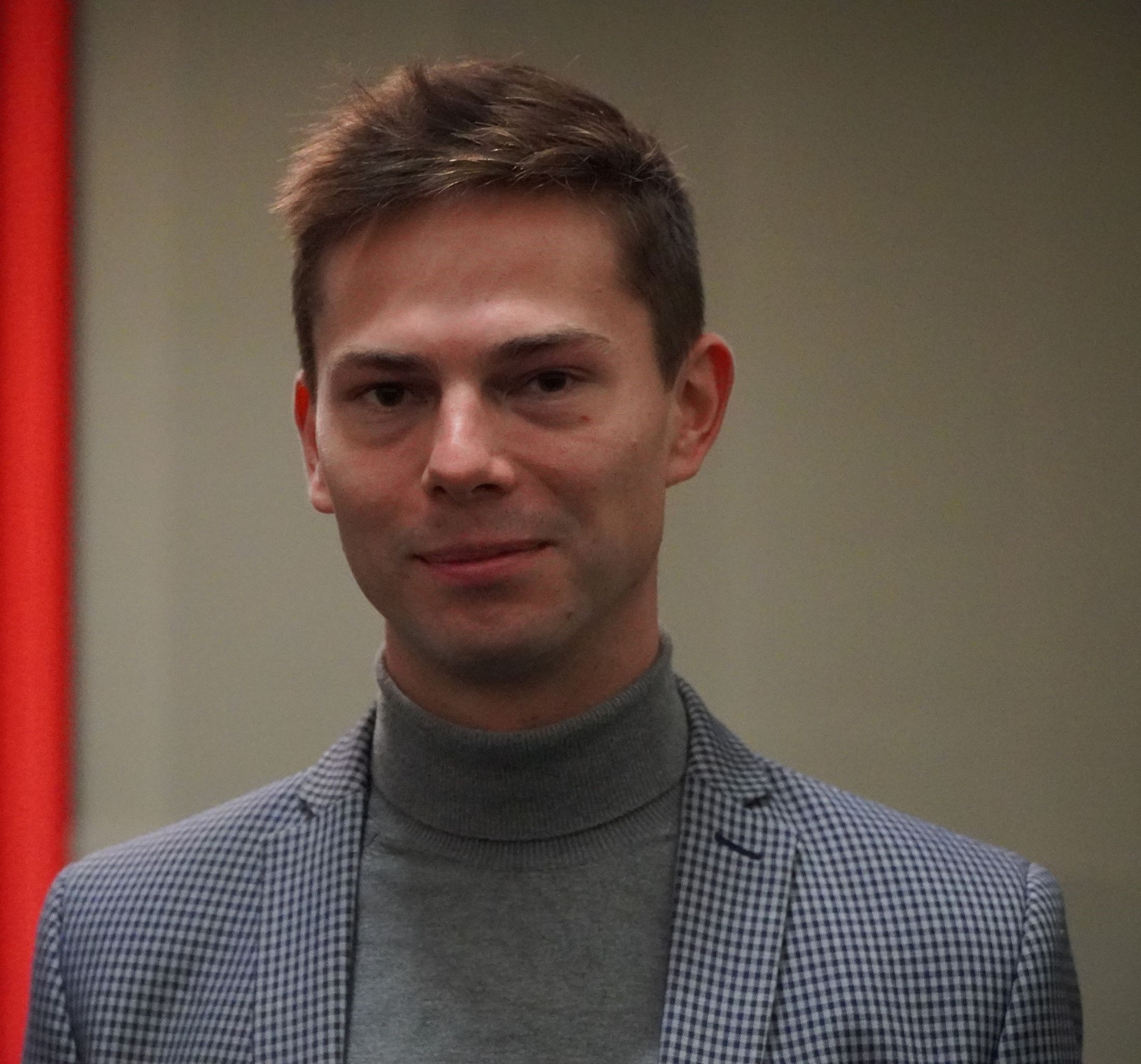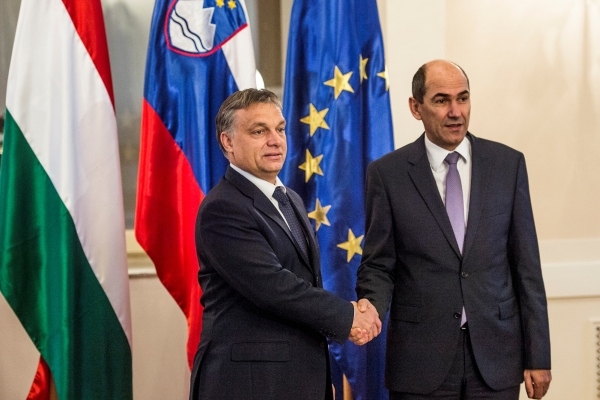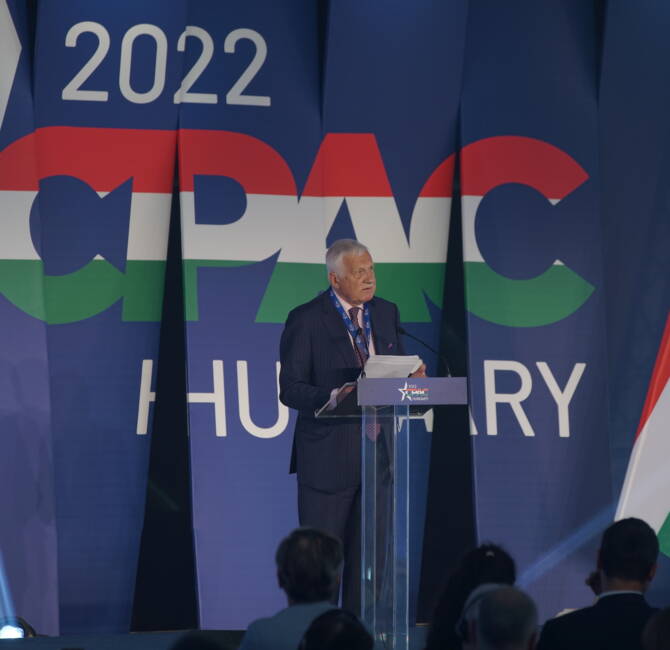On Monday, 15 February 2021, the Visegrád Group (V4) celebrates its 30th anniversary. On this occasion, the presidents of the four countries of the group met for a two-day summit on 9 and 10 February on the Hel Peninsula in northern Poland.
During the meeting, the Polish president Andrzej Duda, discussed with the Hungarian president János Áder, the Czech president Miloš Zeman and the Slovak president Zuzana Čaputová about various subjects of common interest, such as European and transatlantic cooperation, the post-Covid economic recovery of the countries in the region as well as energy and climate security policy.
“It has been three successful decades,”
said János Áder, followed by Miloš Zeman, who spoke of a real “synergy” between the different partners. “We have reasons to be proud. Our cooperation is based on common values,” emphasised Zuzana Čaputová.
The presidents of the V4 then jointly unveiled a commemorative plaque on the occasion of the thirtieth anniversary of the creation of the Visegrád Group. The thirtieth anniversary of the creation of the V4 was also commemorated by the issue of commemorative stamps by the four national post offices. An anniversary spot was also broadcasted on the public television channels of the four countries.
What the Visegrád Group is
The Visegrád Group is a platform for regional cooperation involving four EU and NATO member countries: Hungary, Poland, the Czech Republic and Slovakia. Unlike the EU, the V4 has neither its own institutions nor its own Constitution, it is an ad hoc structure that brings together countries with similar histories and issues. It is a tool to promote European integration and facilitate regional cooperation between its members on political, economic and geostrategic issues. The Chairman of the Hungarian Foreign Affairs Committee Zsolt Németh recently explained that
“the great advantage of the V4 is its flexibility, its lack of bureaucratic red tape and a pragmatic approach to issues of common interest.“
Although still little known, the V4 is not to be neglected: its population is around 64 million, i.e. almost 13% of the total population of the EU, and almost as much as that of France. Poland is the largest country with over 60% of its total population and more than half of its surface area. As an informal group on a par with the Benelux, the Nordic Council and the Eastern Partnership, the V4 operates on the basis of a rotating presidency that changes every year. Poland has held the presidency of the V4 since 1 July 2020. The Hungarian Presidency will begin on 30 June 2021.
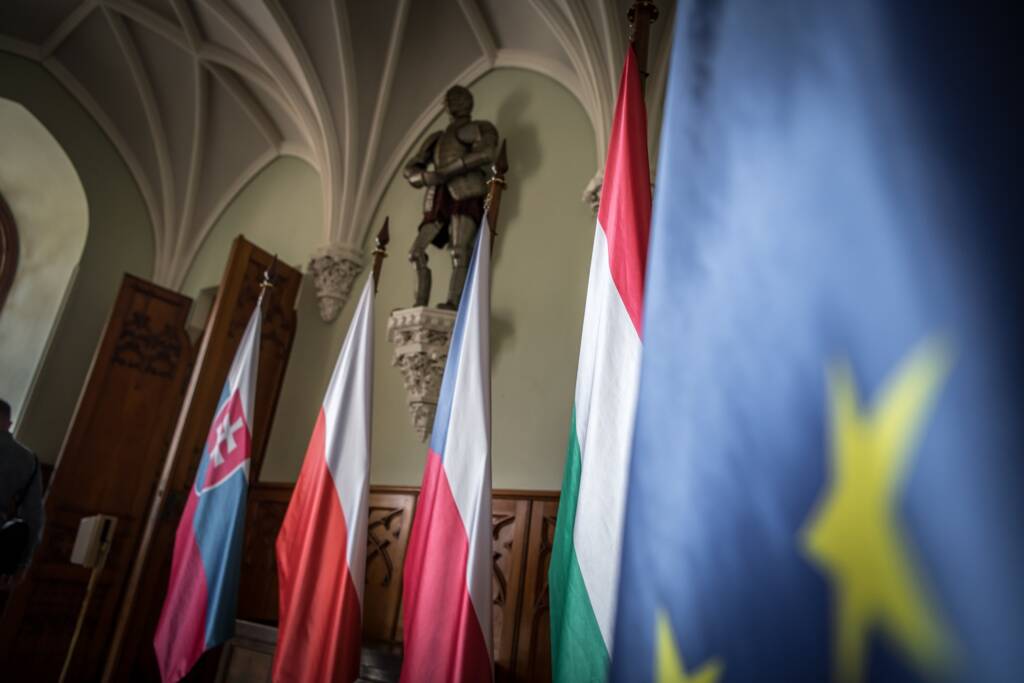
Why the Visegrád Group?
To understand the reason for the existence of such a regional cooperation, let us return to the historical context of the birth of the V4. At the turn of the 1980s and 1990s, the European continent was reunited thanks to the dismantling of the Iron Curtain following the fall of the USSR, which had dominated these countries. On 15 February 1991, the Polish President Lech Wałęsa, the Czechoslovak President Václav Havel and the Hungarian Prime Minister József Antall signed the Visegrád Declaration which marked the birth of the “Visegrád Triangle”.
This declaration on cooperation for European integration underlines the common cultural, spiritual and historical heritage of the three countries, which are aware that they have much in common, and therefore envisage helping each other to prepare a future together by exhausting each other.
The choice of the place refers to the meeting of the kings of Bohemia (today’s Czech Republic), Poland and Hungary in the castle of the Hungarian town of Visegrád in 1335, showing a historical continuity in line with regional interests. For almost one month they discussed their political projects and the future of Europe.
In 1993, Czechoslovakia split in two, giving way to the Czech Republic and the Slovak Republic. The Visegrád Group became then known as the V4. The decade of the 1990s was a period during which these former Eastern Bloc countries underwent considerable economic changes. This transition from communism to what some observers call ‘unregulated capitalism’ was particularly beneficial for the rich Western partners, especially Germany.
Germany absorbed these countries into its fold and developed a real economic hinterland.
It is moreover in the idea of rebalancing their relationship with Germany that the V4 countries will strengthen their economic cooperation in order to form a bloc with more weight vis-à-vis Berlin in the decades to come.
Indeed, these two entities remain highly interdependent economically. This is best illustrated by the fact that the V4 countries together are today a more important economic partner for Germany than France.
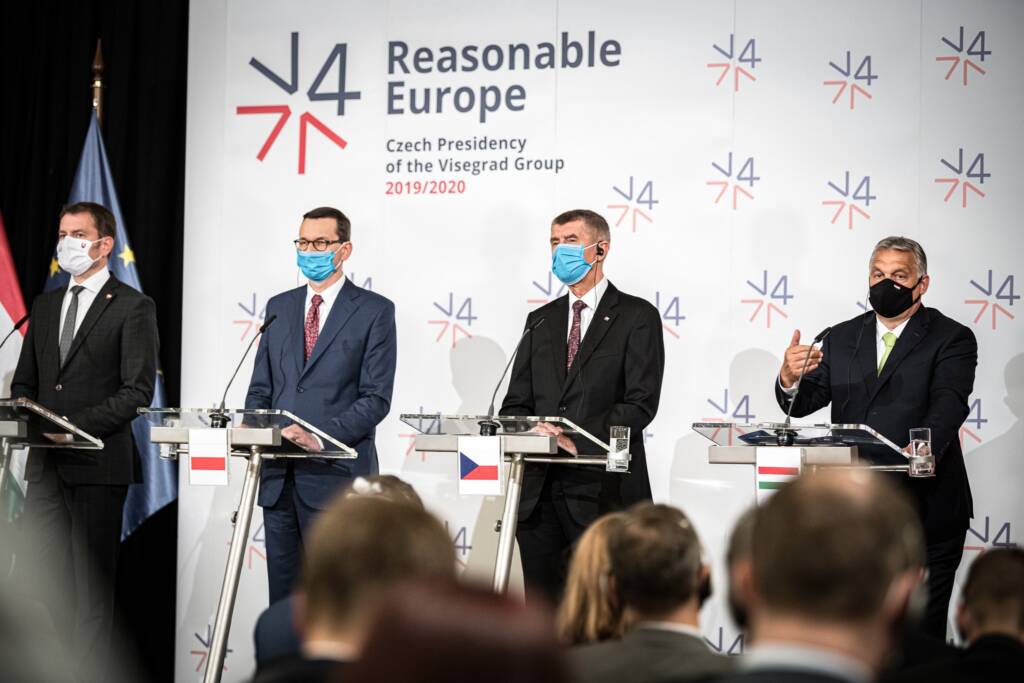
However, the V4 countries have set up a small common and intergovernmental structure to give concrete expression to their cooperation in the field of culture and education in particular. In 1999, the Visegrad International Fund was established. With an annual budget of €8 million, it provides scholarships for schools and research and promotes cross-border cooperation between the V4 countries. In the same year, Poland, the Czech Republic and Hungary achieved the first major goal of their close cooperation, namely the integration into the NATO.
Slovakia joined the NATO only in 2004. In the same year, the V4 countries joined the European Union. In the 2003 referendum on EU membership, the “yes” vote won with 92% in Slovakia, 84% in Hungary, and 77% in Poland and in the Czech Republic respectively.
By joining the EU, the V4 countries wanted to benefit from structural funds to rebuild their ailing infrastructure and give their workers, goods and services access to European markets. Many of the V4 politicians held out the hope to the people of the four countries that their standard of living would soon catch up with that of the Germans or Austrians. The V4 therefore joined the EU and NATO to enjoy military, political and socio-economic protections, against the backdrop of the hope to integrate the West at all levels, completing the transition from the Moscow-led Eastern bloc to the US-dominated transatlantic bloc.
During this process of “return to the West”, the Visegrád countries also integrated the Schengen area in 2007. On 1 January 2009, Slovakia became the only country in the group to join the eurozone.
The breaking point of the relation with the West
A few years later, on the occasion of the 2015 migration crisis, when the Franco-German couple proudly proclaimed “wir schaffen das” (We can do it!), the leaders of the Visegrád Group spoke with one voice to reject the migrant relocation project proposed by the European Commission. This crisis was a good illustration of the ability of the V4 countries to make themselves heard on the European stage, and
therefore 2015 marks the first expression of a break in the common vision of Europe between Western Europe and Central and Eastern Europe. From then on, the V4 countries were no longer mere “followers”.
This opposition to the dominant ideology of the EU’s founding countries leads some to believe that the V4 countries wish to leave the European Union. However, it appears that the people of Central Europe are much more in favour of EU membership than their western neighbours. According to a survey by the Pew Research Center, the people of Poland and Hungary are among the most favourable to the EU with 72% and 61% respectively, in contrast to the French figures (38%).
Since this opposition between the dominant line in Brussels and the V4, which has made itself known in Europe and has given itself a new raison d’être, the V4 has begun to take more and more initiatives of its own. In recent years, several projects launched by the V4 countries have taken on a scale that is attracting the attention of world powers such as China. In 2012, China offered the Central and Eastern European Countries (CEECs) regional cooperation in the “16 +1” format, of which the V4 represents the core.
Beijing then perceived the growing importance of the states of the region on the European chessboard. The aim of this forum is to bring together all decision-makers from the Central European region and the Balkans to discuss the implementation of the local segment of the major Chinese geostrategic project of the new Silk Road, also called Belt and Road (OBOR).
Other important projects include the Three Seas Initiative (or I3M), under US patronage. The I3M is a forum initiated by the Polish president Andrzej Duda and the Croatian president Kolinda Grabar-Kitarović, composed of twelve EU member states in the eastern part of the EU, most of which are former communist countries. In addition to the members of the V4, these countries are Romania, Bulgaria, Austria, Croatia, Slovenia and the Baltic States. The I3M focuses on regional cooperation in energy, transport and infrastructure.
The Polish President Andrzej Duda described the project as “a new concept to promote European unity and cohesion“. The effectiveness of this cooperation can be seen in the gas infrastructure Świnoujście-Krk. This is a network of interconnections linking the countries of the Three Seas region via a north-south gas corridor. “Linking Croatia and Poland through the LNG infrastructure, as well as the connection with Hungary and Ukraine, is the right way to ensure energy security. It will be the backbone of the energy sector of the Three Seas,” said Croatian President Kolinda Grabar-Kitarović in 2017.
We could also mention the construction of the Via Carpatia motorway linking the Baltic States to Greece, the construction of an express railway between Warsaw and Budapest, or the close military cooperation between the V4 countries, which in addition to joint training, independently of NATO operations, are also showing a desire to harmonise their armies, with for example cooperation between the Czech Republic and Hungary : Renowned for its know-how in the manufacture of weapons, the Czech Republic has opened factories in Hungary, and the latter will soon be equipping its police and soldiers with Czech weapons as a matter of priority.
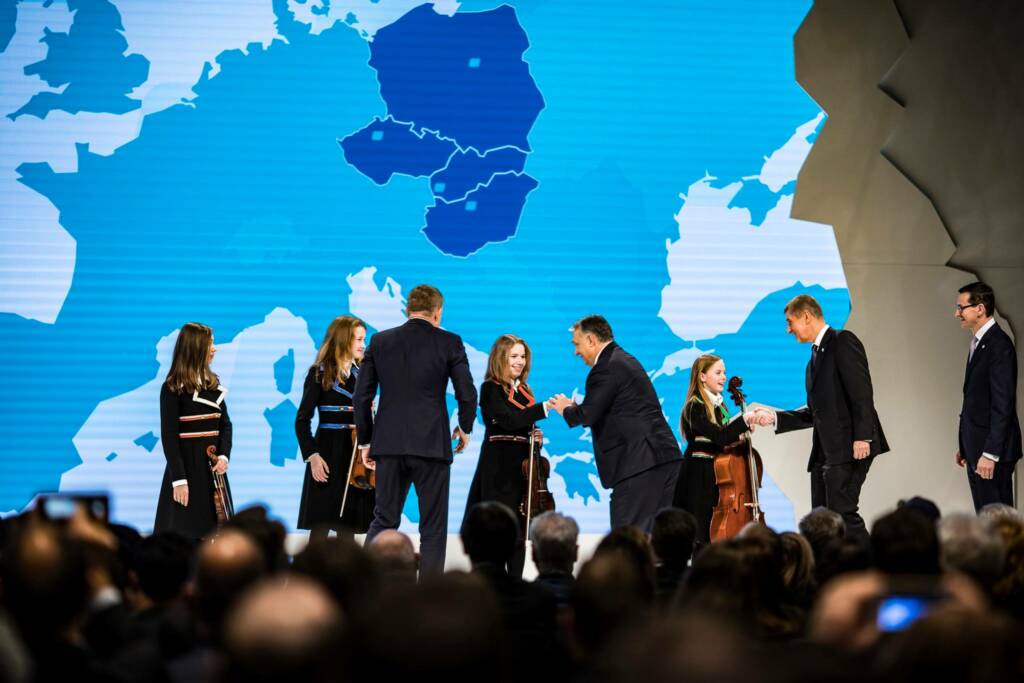
A different Europe, dreaming of a different future
When we look at the V4 countries, we can observe that the ideological deconstruction of the population (gender theory, LGBT propaganda, dictatorship of relativism and progressivism,…) seems to have been, paradoxically, slowed down by half a century of communism, while during this time progressive ideology was at work in the West. Moreover, the economic performance of the V4 countries (low unemployment, high growth) is promising for the future, despite the coronavirus pandemic and all the consequences of the measures taken – an area in which the V4 countries have not deviated from the Western norm.
If we add to this the security aspect (absence of the threat of terrorism or Islamic separatism, as well as multicultural getthos), we can better understand the Hungarian Prime Minister Viktor Orbán when he says that “we [Central Europeans] thought that Western Europe was our future. But it turns out that we are in fact the future of Europe“. Thirty years after its creation, the V4 is thus presenting itself as a player determined to promote the common interests of Central European citizens on the European geopolitical stage, with a different vision of what the future of Europe is and should be.


